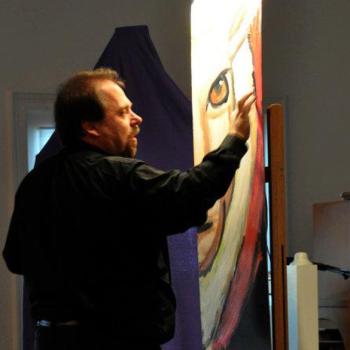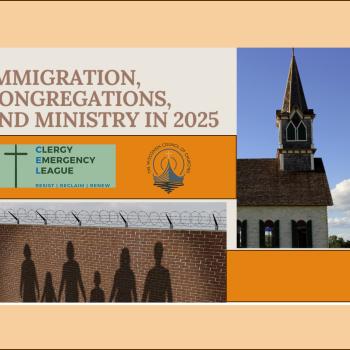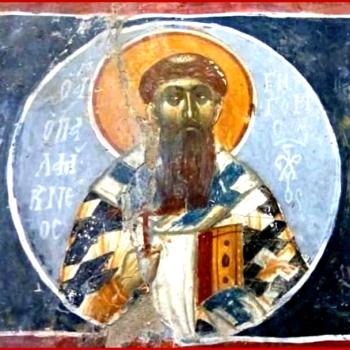The so-called independence model for relating science and religion received a major endorsement a few years ago when the late Harvard paleontologist Stephen Jay Gould proposed it as a formula for keeping the peace. Gould, for years one of the leading public voices for science in America, argued that science and religion are so completely different that they should be viewed as separate bodies of knowledge with no relationship to each other. Gould argued that science provides empirical, factual knowledge of the world and its behavior, and religion addresses questions of values and purpose. And there is simply no overlap between these two pursuits.
Borrowing explicitly religious language, Gould labeled this view "non-overlapping magisteria," or NOMA.
[Each] subject has a legitimate magisterium, or domain of teaching authority—and these magisteria do not overlap (the principle that I would like to designate as NOMA, or "non-overlapping magisteria"). The net of science covers the empirical universe: what is it made of (fact), and why does it work this way (theory). The net of religion extends over questions of moral meaning and value. These two magisteria do not overlap, nor do they encompass all inquiry (consider, for starters, the magisterium of art and the meaning of beauty).
NOMA maps much of the relevant terrain, as we have seen, and has to be the starting point for any discussion of science and religion. We must start by understanding that we are not obliged to seek out religious meaning in the esoteric nooks and crannies of contemporary science, as if every fact about the natural world is like a fortune cookie with a little religious message inside.
Why Do So Many People Think Science and Religion Are at War?
NOMA confronts the enduring but discredited myth that science and religion have forever been in conflict. This view, known as the "warfare metaphor," originated in a pair of influential and widely read books in the nineteenth century: Andrew Dickson White's A History of Warfare of Science with Theology in Christendom and William Draper's History of the Conflict Between Religion and Science. Prior to the appearance of these books, science and religion, except for the occasional skirmish like the Galileo affair, got along fine and were actually supportive of one another, as recent scholarship has clearly shown. And even the infamous Galileo affair was nothing like its urban legend. Galileo was not tortured and his so-called imprisonment was confinement to his house. There was indeed a tragic conflict, but not in the sense that polemicists like White and Draper portrayed.
Given the current highly publicized controversy over evolution, the warfare metaphor can seem all too obvious, if we forget about all the activity taking place off the media radar. In the big picture, warfare is but a minor facet of the interaction between science and religion. Unfortunately, this facet is the most interesting and, far and away, the one likely to appear in a newspaper. When creation and evolution clash in a courtroom, to take the most familiar example, the daily news fills up with stories reminding us of the supposed conflict between science and religion. There is a "Here comes the Galileo affair" template being dusted off and trotted out to make sense of the issue.
The NOMA aspect, of course, does not make the news for, alas, it is not news. Who can imagine an evening news science report beginning with, "Scientists at Yale University today announced that they have discovered the origins of dark matter. Yale theologians report that this discovery has no relevance religion." On the other hand, we often hear stories like "Religious leaders in Kansas City have demanded a meeting with local school board officials to protest the teaching of evolution in local high schools."
Just as the majority of scientists work on topics that do not come into contact with religion, so theologians and biblical scholars pursue topics in fields unrelated to science—topics like the origins and development of Scriptures, philosophical solutions to the problem of evil and the promise of eternal life. These topics do not connect in any natural way to science. NOMA helps by highlighting the extended nonoverlapping nature of science and religion.
NOMA, however, over-compartmentalizes by equating science simplistically with factual knowledge and religion with value or opinion. In that case there would clearly be no overlap between the two pursuits, but this is true only if we accept those overly narrow and restrictive definitions.
Science is not the only source of factual statements and there are important statements made by science that are not purely factual in any simple sense. Cosmologists, for example, speak in meaningful ways about the existence of other universes, but these statements cannot be considered factual in the same sense as statements about other planets. In the same way, religion reaches beyond the realm of values and morals. If statements like "God exists" or "child abuse is wrong" are considered factual claims about reality, then, according to NOMA, they could not be religious statements. On the other hand, few scientists would consider statements like these to be scientific. So what kind of statements are they? The inability of NOMA to handle claims like these about reality highlights its limitations as a universally applicable model.




